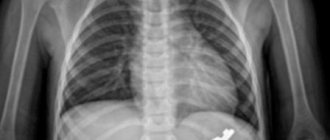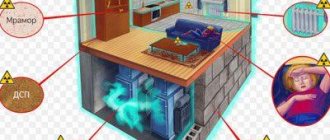According to statistics, poisoning in pets is the most common cause of death in cats and dogs. And this is not surprising, because our pets often do not think about the fact that some substances in the house can be dangerous. They easily try unattended medications, cockroach poison, and detergents. And then, to save the cat, you need to act instantly. To flush out the remaining toxin from the animal's stomach, it is necessary to rinse and induce vomiting.
When inducing vomiting is necessary
Vomiting should be induced if Murka:
- drank antifreeze: vomiting is caused immediately, the effect of the substance provokes kidney failure;
- swallowed something foreign (without sharp edges);
- ate too much human medicine (especially if it’s paracetamol, aspirin or painkillers);
- I ate poison to kill garden weeds (contain arsenic). Intoxication occurs without visible symptoms, so you can help the animal only if the fact of eating poison is recorded;
- swallowed mouse/rat poison. The active ingredient is usually a rodenticide, which interferes with blood clotting and increases vascular permeability - the pet dies from extensive internal bleeding.
Animal treatment
Untimely or incorrect treatment can lead to the death of the pet, so a veterinarian must establish a diagnosis and prescribe therapeutic or surgical procedures for the cat. The choice of drugs and treatment procedures depends on the cause of vomiting identified by the doctor.
To remove toxins from the body and stop vomiting, sorbents and antispasmodics are prescribed; for viral infections and helminthic infestations, antibiotics and antiparasitic drugs are prescribed. Problems with the gallbladder are eliminated with choleretic drugs and physiotherapy. Sick cats are prescribed diet and vitamins.
When trying to make a cat vomit is pointless or prohibited
There is no need to induce vomiting if:
- there is already vomiting (it can get worse and there is a risk of inhaling drugs);
- Substances containing acidic bases or alkalis got inside - bleaches, any household cleaning chemicals, liquids for clearing blockages, petroleum distillate. All of the above products cause burns to the mucous membranes. When vomiting, the cat will receive additional chemical trauma to the mucous membranes;
- the animal is in convulsions/convulsions;
- foreign objects with sharp, piercing edges (needles, small splintered bones, paper clips, glass) have entered the esophagus or stomach cavity - there is a risk of additional injury to the insides when attempting to evacuate them naturally;
- contact or inhalation poisoning - if the cat has inhaled toxic fumes or by absorbing toxic substances through the skin, or by licking their remains from the skin. There is no point in vomiting;
- The cat is pregnant - no attempts at self-help, only to the veterinary clinic!
- there are no signs of consciousness, breathing is depressed, swallowing movements are difficult;
- if more than 1-2 hours have passed since the poisoning, the bulk of the poison has already been absorbed into the blood, vomiting is pointless.
Preventive measures
Following a few simple rules will help reduce the risk of your pet developing gastric disorders accompanied by vomiting. Prevention measures include:
- Proper diet. The diet should include only fresh, high-quality foods; you should not feed your cat fatty foods, or allow your pet to overeat or starve.
- Timely vaccination.
- Periodic (once every 3 months) use of drugs aimed at destroying helminths, fleas, lice and other parasites. Cats walking outside should wear special collars and be dewormed more often.
- Coat care. Large hairballs are difficult to eliminate naturally and can cause indigestion or block the intestines.
- Regular visits to the veterinary clinic to examine the animal’s internal organs.
In addition, the cat's sleeping area and feeding utensils should be kept clean, and dangerous plants, household chemicals and small items should be kept out of the pet's reach.
Provocation of vomiting: how and with what
There are few ways to make a cat vomit. Due to the natural characteristics of these animals, it is difficult to tell which one will work and which one will not. We provide a list, starting from the most frequently used and most effective method in the direction of decreasing effect.
Hydrogen peroxide
The initial dose orally is 1 ml/kg or 5 ml/5 kg (teaspoon). Repeat the procedure after 7-12 minutes as many times as necessary until vomiting begins. Usually one time is enough, in some cases it may be necessary up to three times. This method is considered the most effective.
Ipecac concentrate (emetic root)
It is given strictly once at the rate of 1 tsp. syrup for every 5 kg of animal weight. Maximum – no more than 3 ml/kg Do not repeat, even if vomiting is not provoked! The drug has a dose-dependent effect - it acts as an emetic at the specified dosage, and when exceeded, it has a toxic effect on the cardiovascular system.
Regular table salt
A concentrated saline solution is prepared - table salt is added to warm, boiled water until it can dissolve. An aggressive animal wraps itself up, a calm animal simply sits on its knees and is lifted onto the withers. Pour the solution through the toothless edge into the mouth, without throwing your head back too much. The volume of infused saline solution can reach up to 100-150 ml. But more often than not, vomiting begins before such an amount of liquid can be infused.
If you don’t have time to prepare the solution, you can try pouring pure salt on the root of your tongue. There is often an effect, but it happens that vomiting does not occur, but poisoning from the salt itself may increase.
Plain clean warm water
You can try to make your cat vomit by infusing a large volume of plain drinking water - up to a maximum of 230 ml. Overdistension of the stomach sends impulses to the vomiting center, and the cat begins to vomit. In addition, large volumes of water slow down the absorption of the toxic substance. However, the method is difficult in its technical execution - it is very difficult to pour such an amount of liquid into a cat, which, after the first infusions, will begin to kick and struggle, showing with all its might its reluctance to drink further.
Medication (xylazine, apomorphine)
Vomiting is provoked by medications only in a veterinary clinic. It is strictly forbidden to use them at home due to the dosage peculiarities and the large number of side effects.
What should an owner do if a cat is vomiting?
After vomiting that occurs once and is not accompanied by fever, lethargy, refusal to eat or other alarming symptoms, the owner should not worry and take any measures to treat the pet.
If vomiting occurs several times during the day, has a suspicious consistency and a pungent odor, the following steps will help reduce nausea and alleviate the cat’s condition:
- Drinking plenty of water - relieves the urge to vomit, helps prevent dehydration of the animal's body, accelerates the process of eliminating toxins, and relieves irritation of the gastric mucosa. To avoid regurgitation, water (can be replaced with chamomile decoction) is given in small portions every 30 minutes.
- Food weaning - All foods that your pet ate before vomiting must be eliminated from the body. This process takes about 12 hours, after which you should discard the new food and return to the proven diet.
The consequences of changing the diet or eating low-quality food can be removed by giving the cat 10-15 ml of strong mint infusion or 0.5-1 tablets of activated carbon (depending on its weight). The medicine is introduced into the mouth and the jaws are held until the animal swallows it.
Other drugs intended to treat diseases of the human digestive system should not be given to your pet. Their composition can negatively affect the cat’s body and aggravate its condition.
The reasons for immediately traveling to a specialized clinic and conducting a full examination of your pet are:
- vomiting that continues for 3-4 hours;
- discharge that occurs frequently and abundantly;
- the appearance of blood, mucus, and unidentified particles in the vomit;
- change in consistency, color and odor of discharge;
- deterioration of the pet's condition - fever, lethargy, drowsiness, convulsions, breathing problems, bloating, problems with bowel movements (diarrhea or constipation).
At an appointment at the veterinary clinic, the owner must describe the exact picture of the disease: when the vomiting began, at what intervals it occurs, what it looks like, color and smell.
You should also talk about your pet’s chronic diseases, if any, their usual diet, and any attempt to change food, if any.
Next steps after vomiting
After the cat vomits, the animal should be taken to a veterinary clinic for further rehabilitation. It is advisable to wrap the animal in something warm (a thick large towel, blanket) - usually in case of poisoning, the body temperature drops and hypothermia should not be allowed. You can give adsorbent substances orally, but it’s still better if they are prescribed by a veterinarian (we recommend at least consulting by phone).
You should take with you all items that may be related to the poisonous substance - packaging, bag, bottle, label, direct remains of the poison. If there is nothing, the owner’s task is to describe in as much detail as possible, after which the state of intoxication developed, and what symptoms it manifested. There are substances that require specific antidotes after poisoning, and not just antitoxic therapy. You can understand what exactly the cat was poisoned by using special symptoms. Therefore, every detail of the external manifestation of the condition is important.
Causes
One of the most common causes of cat poisoning is poor quality or stale food. Street cats that find food in garbage dumps often get poisoned. Cats should not be given chocolate - it is poisonous to them. Another reason could be poisonous plants. Some plants are toxic. Cats love to nibble on the greens they like, which can cause them to become poisoned.
Intoxication can also be caused by bites from poisonous insects or snakes. Medicines and household chemicals that are in an accessible place are also dangerous. Poisons for rodents and cockroaches pose a great danger.
What to do if a cat is poisoned, we will consider below.
What else can vomiting be associated with, besides poisoning?
Vomiting may occur without provocation. This symptom accompanies not only poisoning - this must be taken into account.
What else provokes gag reflexes in mustachioed pets:
- endocrine pathologies (diabetes mellitus, with a sharp decrease in sugar levels);
- impaired renal function (renal failure);
- gastric atony (motility cessation);
- parasitic diseases (worms);
- infections (feline distemper, leukemia);
- blood pressure surges;
- if the cat choked and something got stuck in the esophagus;
- motion sickness during transportation;
- side effects from medications (some groups of antibiotics, NSAIDs, anthelmintics);
- heat stroke, overheating in the sun.
Author:
Grinchuk Ekaterina Andreevna veterinarian
What to look for if your cat is pregnant
Cats' bodies react differently to pregnancy. In some of them, excessive intoxication is accompanied by a gag reflex, which occurs most often in the morning. Toxicosis of pregnant women is characterized by vomit in the form of a homogeneous white substance, without a pungent odor or dubious inclusions.
Such symptoms are not alarming. To alleviate the cat’s condition, veterinarians advise changing its diet to a more dietary one or using special food. Nausea in the late pregnancy can be caused by pressure of the fetus on the stomach of the expectant mother.
Some of the food eaten is squeezed out by the kittens and exits through the mouth along with a small amount of bile. This is normal and not a cause for concern. Feeding portions should be reduced so that the food has time to be absorbed.
Sometimes cats vomit just before giving birth - this is the body's way of preparing itself for the process of childbirth, but if a pregnant cat regurgitates a yellow substance and suffers from diarrhea, this may indicate dangerous health problems and should be seen by a doctor as soon as possible.
Pet care
It is worth remembering the rules for caring for your cat during therapy. If the cat cannot regurgitate fur during treatment, what to do and how to remove it:
- provide the animal with plenty of fluids with added oils;
- comb the cat's shedding fur so that she does not do it on her own and does not expose her intestines to another blockage;
- Monitor your pet’s diet and feed it food containing plant components. Such food helps to fill up and enrich the intestines with useful substances.
To avoid infection, it is recommended to monitor your cat's hygiene.
The danger of hairballs
How to remove fleas from a kitten at home
Untimely treatment of pathology leads to the following consequences:
- the hairballs fill the stomach and give the animal a feeling of fullness, causing it to refuse food. This leads to a deficiency of vitamins and nutrients in the body;
- prolonged presence of villi in the stomach leads to eating disorders, bloating and acute pain, which are difficult to relieve with painkillers;
- Long-term presence of wool in the body can cause many infections and inflammatory processes.
Removing hair clots from a cat's stomach using herbs
Foreign bodies in the body lead to a deterioration in the general condition of cats: they lose the desire to frolic and play, and develop apathy and drowsiness.
Dry food
Dry food is no less popular in the fight against pathology. They contain useful macroelements, minerals and vitamins that normalize the functioning of the digestive system.
Purina Cat Chow Special Care Hairball Control
Dry food for removing hair from cats and cats is intended for adult pets. The product has a positive effect on gastrointestinal motility, which helps pets regurgitate fur. The composition includes vitamins, minerals and plant substances.
Hill's Science Plan Feline Adult Hairball Control
A product designed to remove hair from the digestive system. Contains antioxidants, minerals, fiber. The substances have a cleansing and laxative effect.
Savarra Adult Cat Hairball Control
Dry food helps restore the functioning of the digestive system and cleanse the gastrointestinal tract of foreign bodies. The composition includes turkey meat, flax seeds, herbal ingredients. The products are recommended for use in feeding adult cats.
Gimpet Malt-Soft
The product is designed to remove hair from the cat's body. The food is designed for adult pets. It contains plant substances, vitamins and minerals. They regulate the functioning of the gastrointestinal tract and have a preventive effect.
Kittymalt Hairball Remedy Paste, 8 in 1 Excel
The drug contains mineral oils, malt syrup and vitamin E. It has a tonic and laxative effect on the body, helping to remove foreign elements from it.
Fur in a cat's stomach: symptoms
Signs of fur in a pet's stomach vary: from mild discomfort to serious problems with stool. Symptoms of illness:
- frequent constipation, problems with nutrition due to clogged intestines;
- change in the color characteristics of wool;
- decreased immunity;
- lethargic and sleepy state;
- the appearance of bloating, constant attempts to burp;
- cough.
The cat has a stomach ache due to gastrointestinal blockage
If there is fur in the body, owners often examine the kittens' teeth. If there are wool clots on the enamel, it means that some of them have entered the stomach. In such cases, you should urgently consult a doctor.











